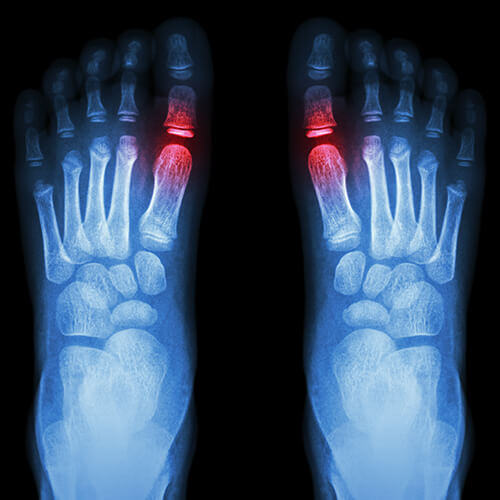1st MTP OSTEOARTHRITIS
Click the menu icon below to learn more about other foot and lower leg conditions.
Characteristics of 1st MTP Osteoarthritis
Hallux Rigidus:
This is a disorder of the big toe joint. Hallux Rigidus causes pain and stiffness in the joint, and with time, it gets increasingly harder to bend the toe. Hallux refers to the big toe, while rigidus indicates a rigid motion that cannot move. Typically resulting from degeneration and wear and tear of the joint. Since hallux rigidus is a progressive condition, the motion of the toe decreases as time goes on.
Common causes of Hallux Rigidus are:
- Atypical biomechanics and structural abnormalities of the foot which are often inherited foot mechanics such as over pronation and excessive midfoot collapse.
- Previous injuries: stubbing or jamming the big toe.
- Poor footwear (high heels) and unstable platforms.
- Inflammatory diseases, such as Rheumatoid Arthritis or Gout.
Hallux Limitus:
This is the earliest stage of 1st MTP OA. When motion of the big toe is only somewhat limited, the condition is called Hallux Limitus. But as the problem advances, the toe’s range of motion gradually decreases until it potentially reaches the end stage of rigidus, in which the big toe becomes stiff or immobile.
Common causes of Hallux Limitus are:
- Atypical biomechanics and structural abnormalities of the foot which are often inherited foot mechanics such as over pronation and excessive midfoot collapse.
- Previous injuries: stubbing or jamming the big toe.
- Shoe change, orthotic intervention, subcutaneous modalities.
Active Alignment Treatment Options:
- Custom Foot Orthotics
- Rigid Carbon Foot Plate
- Bunion Night Splint
- Toe Separators
- Footwear Modifications
- Therapeutic Footwear
- Stretching with targeted exercises for intrinsic arch strength including videos

